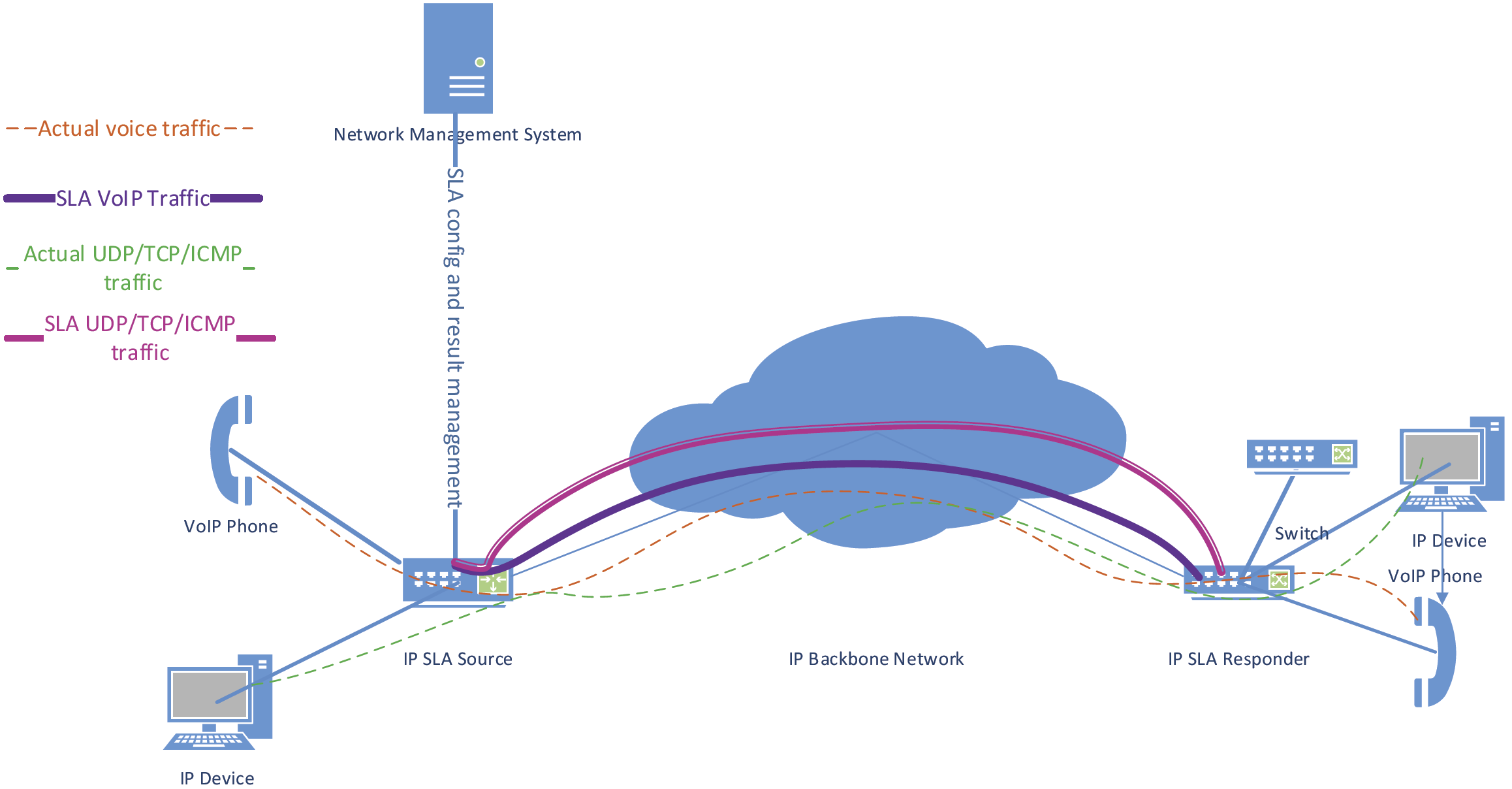Overview
The UDP Jitter and Jitter for VoIP SLA types enable the user to assess the suitability of the network for voice & video related traffic. These SLA's basically calculate parameters like RTT, one way delay, one way positive and negative Jitter etc.

The above diagram shows a typical deployment, where voice & video traffic are exchanged between branch offices of an enterprise over the backbone network. Assessment of the network readiness is always helpful for hosting such services. Parameters like RTT, Jitter and one way delay are a good indicator of network health which assist a network administrator to diagnose latency related issues in the network. VoIP traffic is generally sensitive to delays in the network.
Jitter stands for inter-packet delay variance. If the inter-packet delay increases between successive probe packets, jitter is said to be positive. If the inter-packet delay decreases, jitter is said to be negative. Positive jitter values are undesirable for a network as they indicate increased latencies. A value of 0 jitter is desirable.